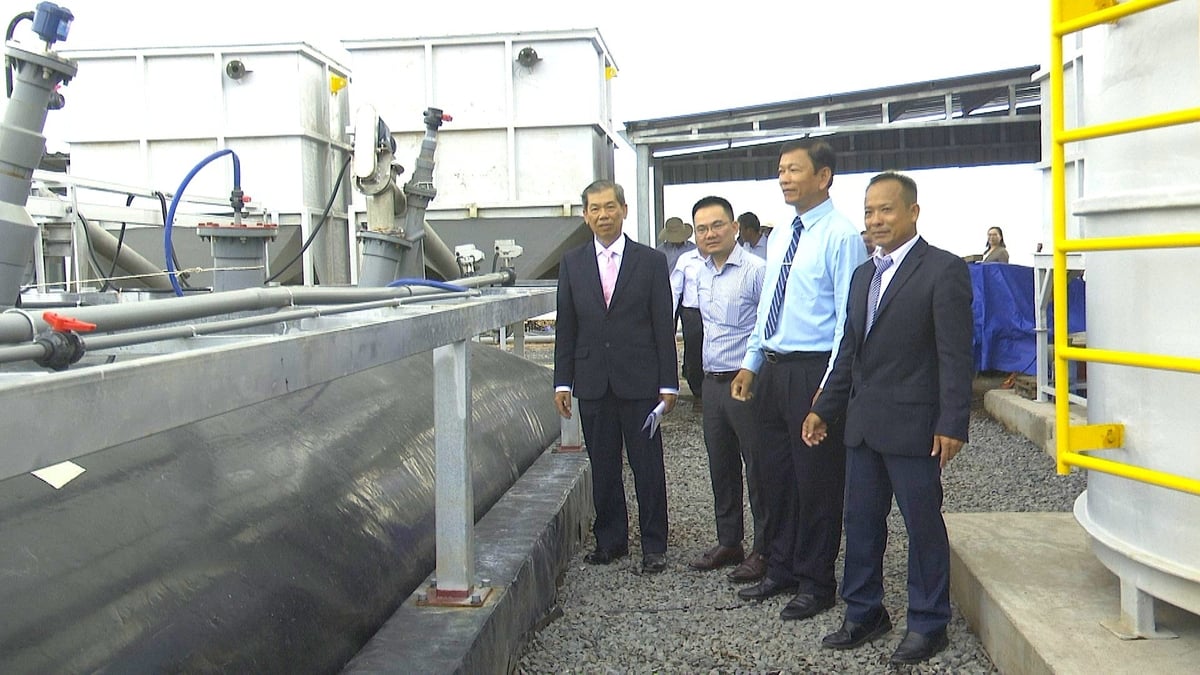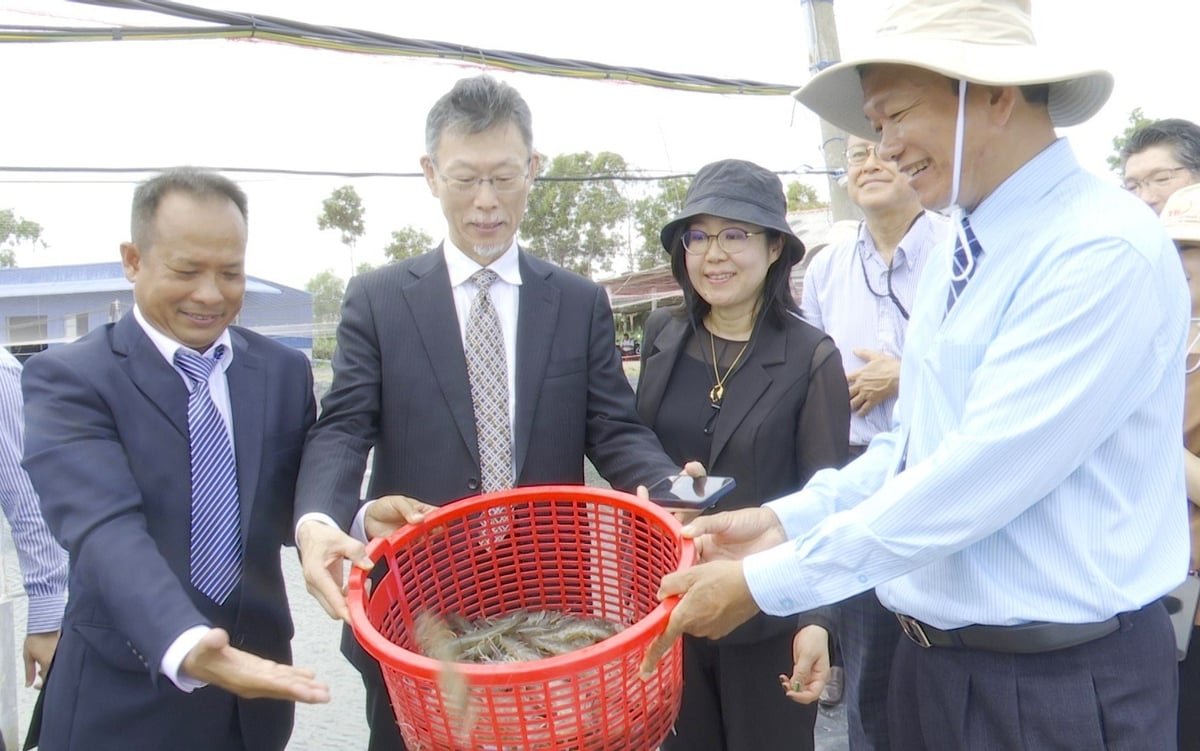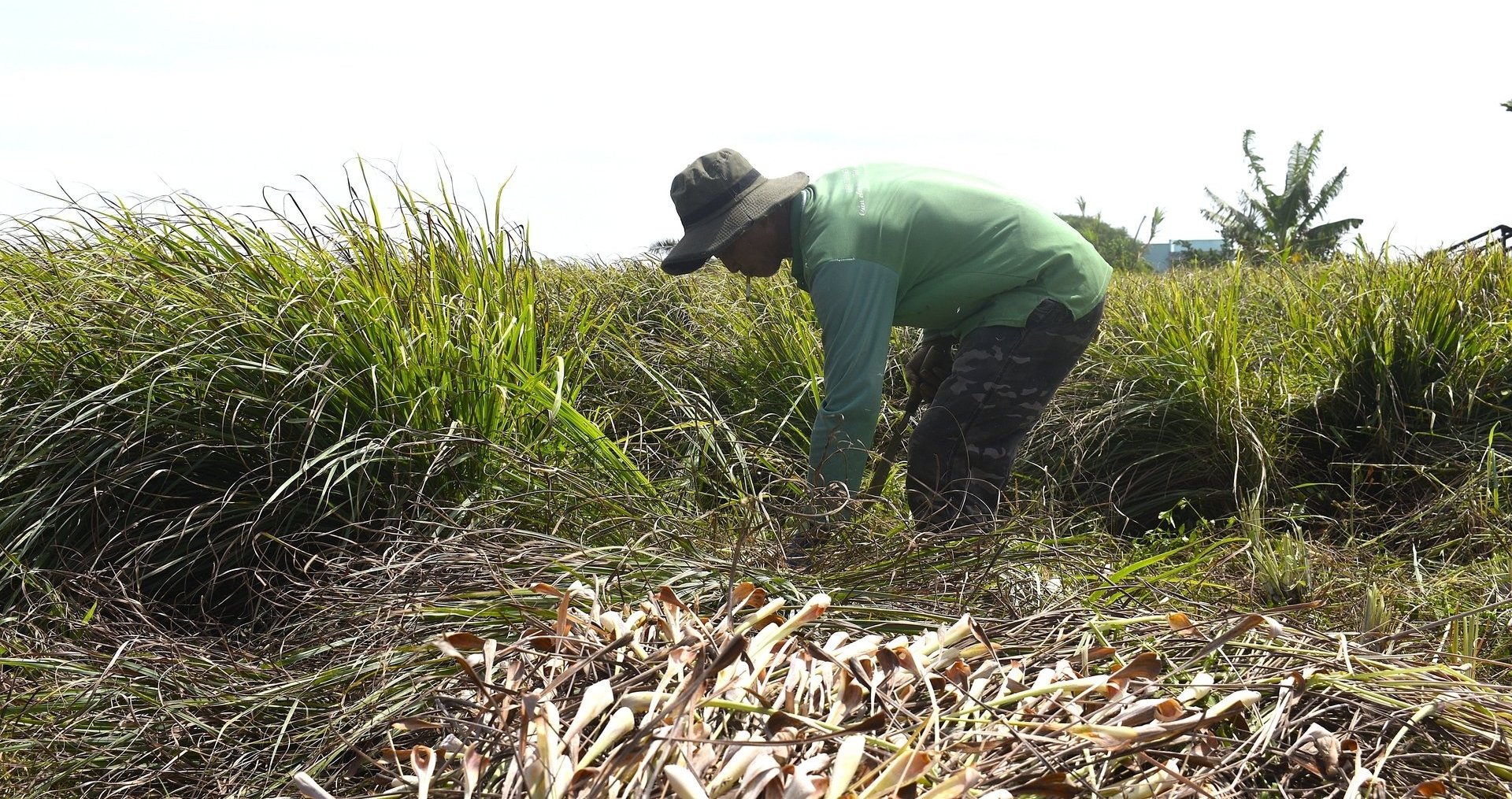November 11, 2025 | 02:42 GMT +7
November 11, 2025 | 02:42 GMT +7
Hotline: 0913.378.918
November 11, 2025 | 02:42 GMT +7
Hotline: 0913.378.918
In recent years, the fisheries sector of Tien Giang has been actively assisting shrimp producers in the adoption of modern technology in order to promote circular production and safeguard the environment.
The "Demonstration of an Energy-Saving Shrimp Farming System Using Biomass" at the farm of Tuan Hien Aquaculture Co., Ltd., based in Ba Tu Hamlet, Phu Tan Commune, Tan Phu Dong District, is one of the project's most notable features. Yuko Keiso Co., Ltd. (Japan) and Tuan Hien Company have been conducting the initiative in collaboration since 2022, with the coordination of the Tien Giang Department of Agriculture and Environment.

Delegates undergo a visit to the demonstration model at Tuan Hien Aquaculture Co., Ltd. Photo: Minh Dam.
As per Mr. Sugawara Toshihide, Deputy Director of Yuko Keiso Co., Ltd., this is a demonstration study of an environmentally favorable shrimp farming system. Locally generated biomass gas powers solid oxide fuel cells (SOFC) and an integrated IoT system.
According to the Tien Giang Sub-Department of Fisheries, this high-density shrimp farming model (500 shrimp/m³) obtains a survival rate of 85% by integrating IoT-based water quality monitoring. Furthermore, there has been a substantial increase in the quality of shrimp and the yield.
Connected to a power generator that operates continuously, the system comprises a 60 m³ biogas container for methane fermentation. It automates the entire process, from fermentation to power generation, by incorporating sophisticated sensors that monitor temperature, pressure, and gas concentration. The shrimp farming operations use the generated electricity directly. Therefore, the model reduces greenhouse gas emissions by approximately 15.5 tons of CO₂ per year for every 1,000 m² pond in compared to semi-intensive farming and by up to 26.9 tons/year in compare to modern intensive farming.

The demonstration model's shrimp are disease-free and produce a high level of productivity. Photo: Minh Dam.
The energy-saving high-tech shrimp farming system is not only the outcome of the two companies' close cooperation and relentless effort, but also a clear demonstration of their shared vision and commitment to the application of modern technology for enhanced productivity and environmental protection, according to Mr. Ngo Minh Tuan, Director of Tuan Hien Aquaculture Co., Ltd. The system is currently functioning consistently and generating highly optimistic outcomes.
"I’m currently deploying the model on two ponds. The initiative has effectively utilized waste to reduce costs, increase shrimp yield, and protect the environment during the initial phase", Mr. Tuan stated, "I will persist in monitoring its economic efficiency in order to evaluate the feasibility of expanding it to other ponds."
This is the first model in the province's aquaculture sector to integrate waste treatment with the efficient utilization of local agricultural by-products to produce electricity for production purposes, according to the Tien Giang Department of Agriculture and Environment.

Tan Phu Dong is the most extensive lemongrass cultivation region in Tien Giang. Each harvest generates an immense quantity of byproducts. Photo: Minh Dam.
According to Mr. Nguyen Trong Tuy, the Head of the Tien Giang Sub-Department of Fisheries, the project has essentially concluded its initial phase, which comprised trials and demonstrations. The subsequent phase will concentrate on the dissemination of new scientific and technical knowledge to local communities. The initiative has optimized high-density shrimp farming by incorporating advanced technology and biomass to produce clean, renewable energy. This is a significant development in shrimp farming, as it contributes to the advancement of science and technology that are in accordance with sustainable agricultural practices.
Tien Giang's fisheries sector will keep going in its efforts to motivate farmers to implement environmentally favorable, high-tech aquaculture models that are flexible in response to climate change.
Translated by Linh Linh

(VAN) The Department of Hydraulic Works Management and Construction aims to build a modern, smart, and sustainable water management sector that ensures water security and promotes rural development in Viet Nam.

(VAN) Dong Thap province stands before major opportunities in restructuring its economy, particularly in agriculture and environmental management, which have long been local strengths.

(VAN) The degradation of Cat Ba’s coral reefs is not a random phenomenon but the result of a series of negative factors that intertwine human activities with harsh natural changes.

(VAN) A synchronized scientific strategy combined with stringent management is considered the dual solution to protect the precious swiftlet population and affirm the nation's brand position.

(VAN) The renewal of agricultural extension work based on the green agricultural economy mindset is an essential requirement, contributing to the intellectualization of farmers, promoting green production, and achieving sustainable development.

(VAN) Viet Nam’s crop sector is undergoing a strong transformation from awareness to green action, toward a sustainable, low-emission agriculture.

(VAN) National geospatial data has become a vital component of digital infrastructure, supporting digital transformation, territorial sovereignty management, the pursuit of a green, modern and sustainable economy.